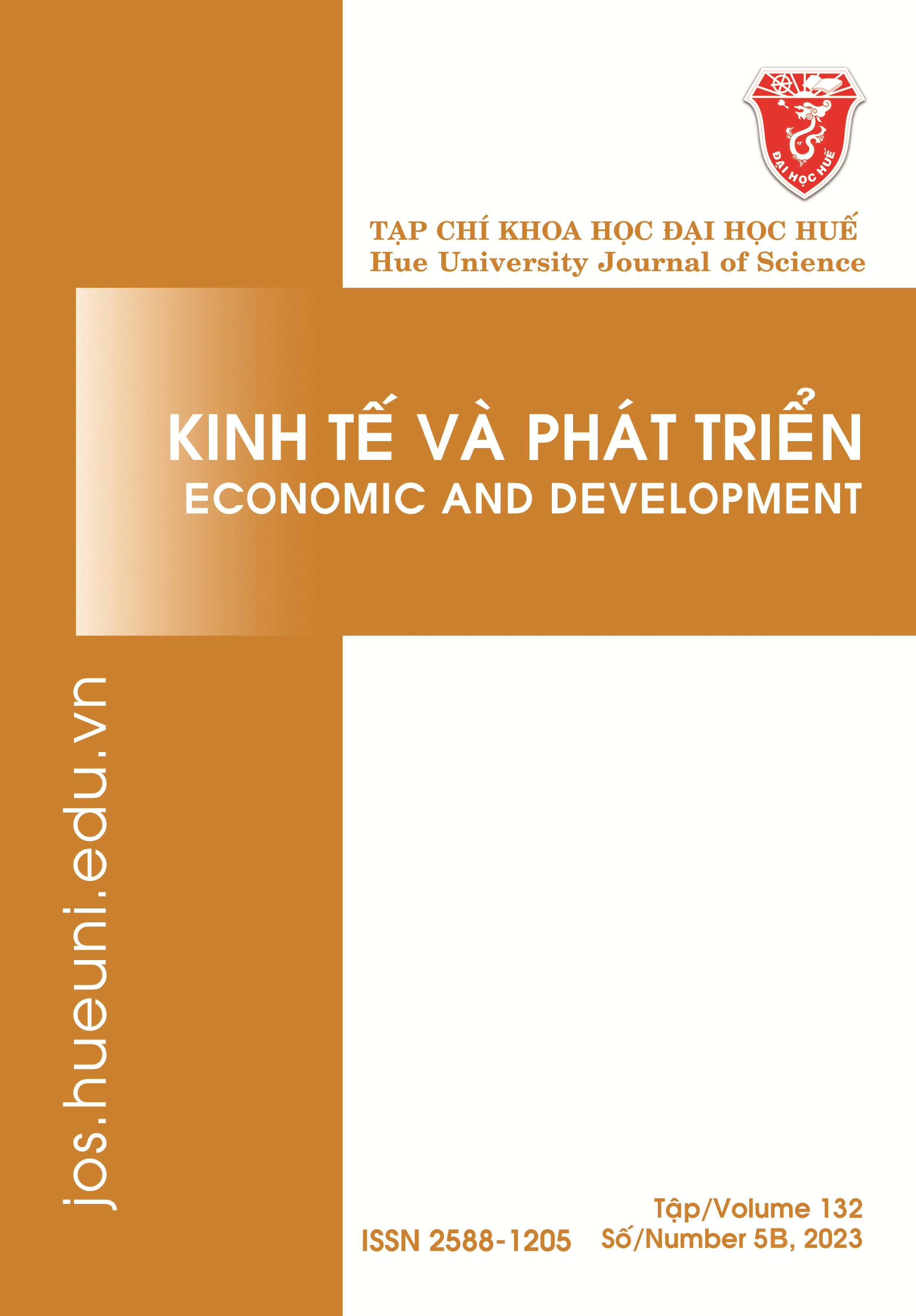Abstract
We implement simulations for two policy scenarios to explore how Vietnamese trade and investment change following the EU-Vietnam free trade agreement (EVFTA), based on a computable general equilibrium model. Simulation results indicate that the bilateral trade between Vietnam and the EU grows substantially, and by a much greater amount than the growth of total exports and total imports for the two regions. Aggregating the sectors modelled into six aggregate sectors including agricultural, processed food, extraction, labour-intensive manufacturing, other manufacturing, and services sectors, we find that the processed food and labour-intensive manufacturing sectors in Vietnam experience significant export growth, whereas the remaining four sectors witness declines in exports. In terms of the investment effect of the EVFTA, we find that the EVFTA leads to positive changes in Vietnam’s short-run current rates of return, which is due to the change in the short-run rental price of capital. The findings suggest that Vietnam would receive significant capital gains in the long-run. We further find that all the policy components contribute to the capital growth in Vietnam in the long-run. However, capital gains resulting from tariff elimination are much larger than those from other policy components.
References
- Kutlina-Dimitrova, Z., & Lakatos, C. (2014), Assessing the economic impacts of the EU-Singapore FTA with a dynamic general equilibrium model. International Economics and Economic Policy, 11(3), 277–291.
- Baker, P., Vanzetti, D., & Pham, L. H. (2014), Sustainable impact assessment: EU-Vietnam FTA. Hanoi, Vietnam: MUTRAP-European Trade Policy and Investment Support Project.
- Baker, P. R., & Vanzetti, D. (2019), The impact of the EU-Vietnam free trade agreement on the UK economy. Retrieved from https://assets.publishing.service.gov.uk/government/uploads/system/uploads/attachment_data/file/790325/Impact-of-the-EU-Vietnam-free-trade-agreement-on-the-UK-economy.pdf
- European Commission (2018), The economic impact of the EU-Vietnam free trade agreement. Retrieved from https://trade.ec.europa.eu/doclib/docs/2019/february/tradoc_157686.pdf.
- Kikuchi, T., Yanagida, K., & Vo, H. (2018), The effects of mega-regional trade agreements on Vietnam, Journal of Asian Economics, 55, 4–19. https://doi.org/10.1016/j.asieco.2017.12.005.
- Jean, S., Mulder, N., & Ramos, M. P. (2014), A general equilibrium, ex-post evaluation of the EU–Chile free trade agreement. Economic Modelling, 41, 33–45.
- Nowak-Lehmann, F., Herzer, D., & Vollmer, S. (2007), The free trade agreement between Chile and the EU: Its potential impact on Chile's export industry, Applied Econometrics and International Development, 7(1), 99–120.
- Frey, M., & Olekseyuk-Viber, Z. (2011), Effects of trade liberalization between the EU and Ukraine in a computable general equilibrium (CGE) model, Paper presented at the European Trade Study Group (ETSG) Thirteenth Annual Conference, 8–10 September, Copenhagen Business School and University of Copenhagen, Copenhagen, Denmark.
- Slootmaekers, V. (2004), Trade effects of the EU-Mexico free trade agreement, Kiel, Germany: Institute of World Economics.
- Lakatos, C., & Nilsson, L. (2017), The EU-Korea FTA: Anticipation, trade policy uncertainty and impact. Review of World Economics, 153(1), 179–198.
- Decreux, Y., Milner, C., & Péridy, N. (2010), Some new insights into the effects of the EU-South Korea free trade area: The role of non tariff barriers, Journal of Economic Integration, 25(4), 783–817.
- Philip, M., Laurenza, E., Pasini, F., Dinh, V., Nguyen, H., Pham, A., & Nguyen, L. (2011), The free trade agreement between Vietnam and the European Union: Quantitative and qualitative impact analysis, Hanoi, Vietnam: MUTRAP III.
- Duong, N. B. (2016), Vietnam-EU free trade agreement: Impact and policy implications for Vietnam (SECO/WTI Academic Cooperation Project Working Paper). Retrieved from https://boris.unibe.ch/97935/1/working_paper_no_7_2016_duong.pdf.
- Vu, H. T. (2016), Assessing potential impacts of the EVFTA on Vietnam’s pharmaceutical imports from the EU: An application of SMART analysis, Springerplus, 5(1), 1503.
- Hertel, T. W. (1997), Global trade analysis: Modeling and applications, Cambridge, England: Cambridge University Press.
- Francois, J. F., McDonald, B. J., & Nordstrom, H. (1996), Liberalization and capital accumulation in the GTAP model (GTAP Technical Paper No. 7). Retrieved from https://www.gtap.agecon.purdue.edu/resources/res_display.asp?RecordID=310.
- Walmsley, T. (1998), Long-run simulations with GTAP: Illustrative results from APEC trade liberalisation (GTAP Technical Paper No. 9). Retrieved from https://www.gtap.agecon.purdue.edu/resources/download/32.pdf.
- Kawasaki, K. (2015), The relative significance of EPAs in Asia-Pacific, Journal of Asian Economics, 39, 19–30. https://doi.org/10.1016/j.asieco.2015.05.001.
- Aguiar, A., Chepeliev, M., Corong, E. L., McDougall, R., & van der Mensbrugghe, D. (2019), The GTAP data base: Version 10. Journal of Global Economic Analysis, 4(1), 1–27. http://dx.doi.org/10.21642/JGEA.040101AF.
- Delegation of the European Union to Vietnam (2019), Guide to the EU-Vietnam trade and investment agreements. Retrieved from https://trade.ec.europa.eu/doclib/docs/2016/june/tradoc_154622.pdf.
- World Trade Organisation (2019), Trade facilitation. Retrieved from https://www.wto.org
- Kee, H. L., & Nicita, A. (2016), Trade frauds, trade elasticities and non-tariff measures, 5th IMF-World Bank-WTO Trade Research Workshop. Retrieved from http://pubdocs.worldbank.org/en/315201480958601753/3-KEE-paper.pdf.
- Kee, H. L., Nicita, A., & Olarreaga, M. (2009), Estimating trade restrictiveness indices, Economic Journal, 119(534), 172–199. http://doi.org/10.1111/j.1468-0297.2008.02209.x.
- Fontagné, L., Mitaritonna, C., & Signoret, J. (2016), Estimated tariff equivalents of services NTMs (Working Paper 2016-07-A), Washington, DC: U.S. International Trade Commission.
- Walmsley, T., Strutt, A., Minor, P., & Rae, A. (2018), Impacts of the comprehensive and progressive agreement for trans-Pacific partnership on the New Zealand economy, Boulder, CO: ImpactECON.

This work is licensed under a Creative Commons Attribution-ShareAlike 4.0 International License.
Copyright (c) 2023 Array
